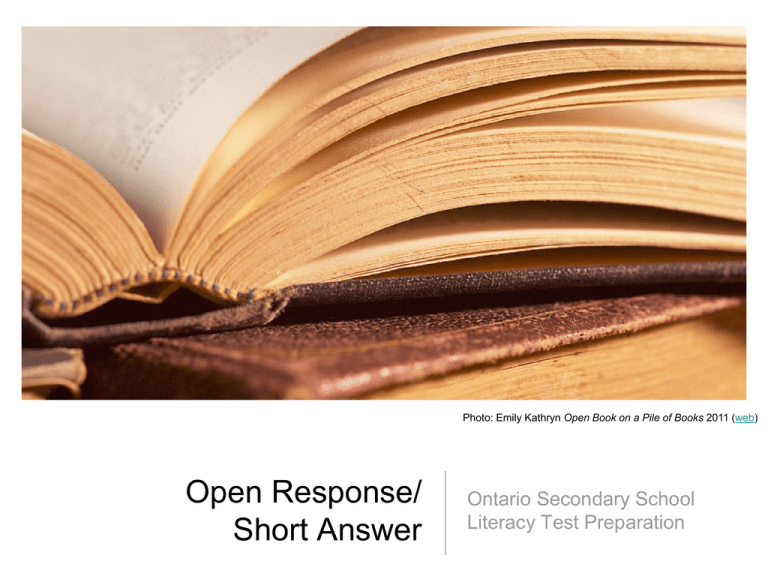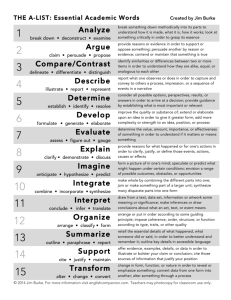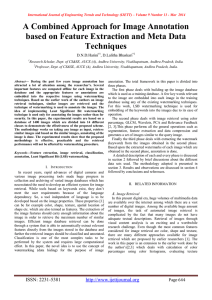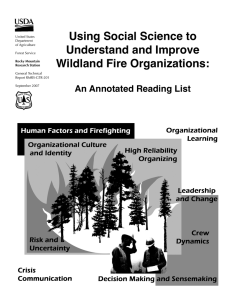Short Answer
advertisement

Photo: Emily Kathryn Open Book on a Pile of Books 2011 (web) Open Response/ Short Answer Ontario Secondary School Literacy Test Preparation Writing Review: Open Response / Short Writing Paragraph: try for 3 sentences ! (6 lines) Prepare your answer with rough notes Use reasons from the reading (Short Writing Tasks) Use reasons from your own knowledge & experience (Short Writing & Open Responses Questions) Template: Main answer Reason 1 Reason 2 Tips for Responding to a Short Answer Question 1. Read the question carefully so you know how to respond. Check and see if there are multiple parts that require specific responses. 2. Use a highlighter - highlight key words / phrases. 3. Respond directly to the question - focus your answer. 4. Write concisely but with sufficient detail - get to the point. 5. If you are not sure of how to respond, try writing something - partial points are better than no points. 6. Respond to easier questions first and then return to more challenging questions. Steps to Take when Responding to Short Answer Questions 1. Read the question so you know what you need to focus on while reading any required text. 2. Read any provided supporting material related to the question (i.e. texts, images, graphs, graphic organizers, etc.). 3. Re-read the question, focusing on what type of response you need to formulate. 4. Gather the required information (i.e. supporting examples, quotations, statistics, etc.) and to organize ideas in order to create a coherent response. 5. Write your response in the space provided. 6. Review your response, checking for organization, spelling, grammar and punctuation. Short Answer Examples (practice answering): Which One is Better? • Read Response A and Response B and discuss with an elbow partner which one you think is better and WHY? Response A Response B Discuss with your partner! A or B? explain Why? Answer: B was better! Why? • 1) The student wrote on ALL 6 lines. • 2) The student included 2 specific detail from the text. For example, “the bridge was built 2200 years ago” and “wonder whether the ancient Roman pedestrian bridge is suited to such an overwhelming display of emotion”. Scoring • Each Short Answer Question (based on a reading passage) receives a score of 0, 10, 20, or 30. • Each Open Response question (based on your own knowledge and experience) is marked out 30 for Topic Development (scores of 0, 10, 20, 30) and 20 (scores of 0, 10, 20) for Writing Conventions. What is the difference? What is the difference between scoring a 10, 20 or a 30? This is a 10. What’s missing? • This response attempts to answer the question by stating an opinion (“I don’t think this archaeological found the settles of the historical question”) but supports this opinion with another statement of opinion (“because I think that pasta was discovered in Italy”), not with details from the selection. This is a 20. What’s missing? This response provides an opinion (“It is hard to determine the answer ”) with vague support “the discovery of ancient noodles in China helps to support them. But if the Italian records can be proven ture and legitament, the Italians have the victory if not then the Chinies”. This is a 30. What’s missing? Nothing. The response provides an opinion (“This archeological find settles the historical question”) uses specific and relevant information from the selection (references to evidence and to Marco Polo) to support the opinion. Short Answer Keywords • When responding to short answer questions it is important to read the question very carefully. The following keywords that you can find in the question will direct how you are to respond. • On the following slides, you can learn what these keywords mean, and have an opportunity to see sample questions, and a standard level 3 response. • • • • • • • • compare • define • describe • determine • explain identify justify Teachers, list predict summarize use information from the reading selection to support your answer use your own ideas to support your answer if students are confused about any of these keywords, please review. Compare • The response must state what is the same in the two things being compared or what is different between them. The comparison should include examples that show how the things are similar or different in one or more important ways. Compare - Level 3 Response • Compare Apples and Oranges • Apples and oranges are both fruit, are grown on trees and have seeds in their centres. However, an orange has a thinker and tougher skin while the skin on an apple is much thinner. Define • The response must state the meaning of the word or phrase being defined. The response should include the meaning and sufficient detail to distinguish the meaning from similar words or phrases. Define - Level 3 Response • Define educate • give intellectual, moral, and social instruction to (someone, esp. a child), typically at a school or university: she was educated at a boarding school. • • provide or pay for instruction for (one's child), esp. at a school. Describe • Questions can ask for a description of something, someone or an idea or the sequence in which a series of things happens or a problem is solved. The response must use words to create a mental picture of what is being described for the reader. The response must give the characteristics and key features of what is being described in an organized manner. Describe - Level 3 Response Annotation: This response describes how the clerk’s attitude changes (She starts with a strict attitude...she becomes more understanding). The response uses specific and relevant details to support the description (For example, she demands them to leave their backpacks by the door in the beginning, but later she...let them put their bags behind the counter). Determine • The response must show a solution to a problem using logical reasoning. Determine - Level 3 Response • Determine the number of school days left until Family Day. • There is 1 school day left until Family Day Explain • The response must provide specific and relevant supporting details and show the link between the explanation and the idea or point being explained to make the answer clear. The response must use words to make clear how something (or someone) works, what something (or someone) is like or why something happens or works the way it does (emphasis is on cause-effect relationships or step- by-step sequences). Explain - Level 3 Response Annotation: The response identifies an example of how Burd/Burd’s project demonstrates the work of a scientist (discovered and isolated) and clearly explains it with specific and relevant support from the selection (micro-organism that is responsible for breaking down Plastic bags). Identify • Questions can ask for the name of a person, place or thing, or for a reason. The response must use information from the reading selection. Identify - Level 3 Response Annotation: This response identifies an ideal destination for a high school field trip (Quebec City) and provides details that are specific and relevant to the destination (practice their French language skills...Quebec City is a provincial capital, so student’s can learn about & understand Canadian politics) to clearly explain this choice. Justify • The response must give reasons, evidence and/or calculations to show why an answer, argument or conclusion is correct. Justify - Level 3 Response • What is an effective way advertisers persuade teenagers to buy a product. Justify your answer with examples Annotation: This response identifies a way advertisers persuade teenagers (“by showing them someone they can relate to or a popular celebrity using the product”). The explanation uses specific and relevant details (“if you see Arnold Schwarzenneger using a certain protein shake”) and explains why the method is effective (“teens will think of how Arnold was big...This can certainly persuade teens to buy the protein shake”). List • The response must include information in point form. List - Level 3 Response • List your courses in Semester 2. • Math • Music • English • Phys. Ed Predict • The response must identify what may happen based on the information provided in the reading selection or mathematical question. Predict - Level 3 Response • Based on the first chapter of Hunger Games, predict what you think will happen to Katniss Everdeen. (Your answer will be based on the content of the first chapter. What happens to this character? What is foreshadowed within the chapter? Summarize • The response must concisely identify the main idea and give relevant details supporting it in the original text. Summarize - Level 3 Response Annotation: This response provides a correct main idea (convert a passenger car into a classroom) and a specific detail from the selection that is relevant to that idea (In the 1920’s ... A North Bay superintendent came up with an idea).






